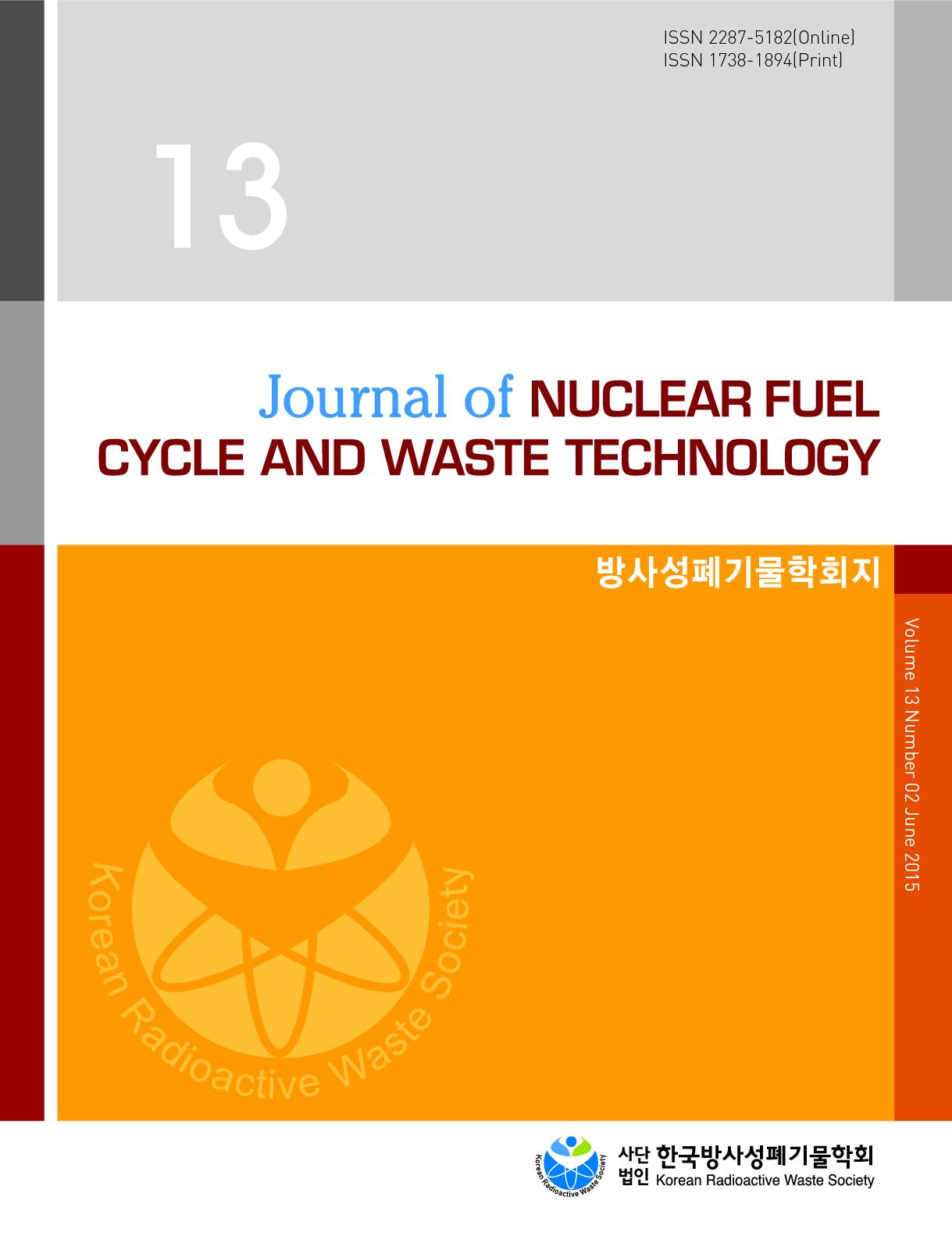- 영문명
- 발행기관
- 한국방사성폐기물학회
- 저자명
- Prashant Bagri Michael F. Simpson
- 간행물 정보
- 『Journal of Nuclear Fuel Cycle and Waste Technology (JNFCWT)』Vol.13 Special, 45~53쪽, 전체 9쪽
- 주제분류
- 공학 > 공학일반
- 파일형태
- 발행일자
- 2015.11.30

국문 초록
The US Department of Energy’s Idaho National Laboratory (INL) has been operating a molten salt electrorefiner at their facility since 1996. The baseline method for disposal of the radioactive salt is the ceramic waste process which generates glass bonded sodalite loaded with chloride salts. This process starts with the high temperature absorption of the salt into zeolite-4A. The salt-loaded zeolite is then blended with glass frit and heated to form a sintered, glass-bonded sodalite. INL is currently assessing alternatives for disposal of the ER salt because of the lengthy processing times, costly equipment and large volume of waste associated with the baseline process. An alternative process was studied, where protonated zeolite was used instead of alkali metal-substituted zeolite. It was found that the metals contained in the salt can replace the protons in the zeolite which are evolved via formation of HCl. From the standpoint of generating a nuclear waste form, the evolution of HCl gas should reduce the weight of the final waste. It has been estimated that the volume of waste produced from immobilizing the INL electrorefiner salt could be reduced by a factor of three using this process followed by sintering the fission product loaded zeolite. Equipment requirements in the hot cell would be significantly simplified, and the time to process all of the waste salt would be reduced by almost a factor of 4. An investigation into the new process has been presented here.
영문 초록
목차
해당간행물 수록 논문
참고문헌
최근 이용한 논문
교보eBook 첫 방문을 환영 합니다!

신규가입 혜택 지급이 완료 되었습니다.
바로 사용 가능한 교보e캐시 1,000원 (유효기간 7일)
지금 바로 교보eBook의 다양한 콘텐츠를 이용해 보세요!


